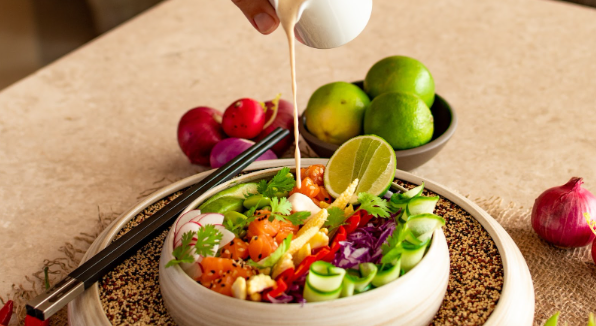
Salad Dressing for Keto Diet Store Bought
Choosing the right salad dressing can make or break your keto diet journey. When you’re navigating through the aisles of your local grocery store, it can be a challenge to find a dressing that suits your taste and aligns with your dietary needs. After all, most store-bought dressings are laden with sugars and unhealthy fats, which are a big no-no for anyone on a ketogenic diet.
But don’t worry! I’m here to help you make an informed choice. With extensive research and firsthand experience, I’ve come to understand what makes a salad dressing truly keto-friendly. Here’s the lowdown: you need to look for dressings high in healthy fats (yes, there’s such a thing!), moderate in protein, and extremely low in carbs.
In this article, we’ll delve deeper into some of the best store-bought salad dressings suitable for those on a keto diet. We’ll also discuss what ingredients to avoid when choosing your next bottle of dressing so that you can stay committed to your wellness goals without sacrificing flavor.
Understanding the Keto Diet
Let’s dive right into understanding what exactly a keto diet is. It’s a low-carb, high-fat diet that has been lauded for its ability to help people lose weight efficiently. The premise behind it is quite simple: by drastically reducing your intake of carbs and replacing them with fats, you’re putting your body into a metabolic state called ketosis.
When this happens, your body becomes incredibly effective at burning fat for energy. Additionally, it turns fat into ketones in the liver, which can supply energy for the brain. This makes the keto diet not just beneficial for weight loss, but also potentially useful for certain medical conditions like epilepsy or Alzheimer’s.
There are several versions of the ketogenic diet:
- Standard Ketogenic Diet (SKD): This is typically 75% fat, 20% protein and only 5% carbs.
- Cyclical Ketogenic Diet (CKD): This involves periods of higher-carb refeeds such as five ketogenic days followed by two high carb days.
- Targeted Ketogenic Diet (TKD): In this version you add carbs around workouts.
- High-protein Ketogenic Diet: Similar to standard but includes more protein with ratio often being 60% fat, 35% protein and 5% carbs.
Though there are variations – SKD remains most researched and most recommended among these.
With this foundation on what a keto diet is let’s explore store-bought salad dressings that align well with this dietary approach in our next section!
What’s in a Keto-Friendly Salad Dressing?
When I delve into the world of keto-friendly salad dressings, it’s clear that not all dressings are created equal. The primary concern for those on a ketogenic diet is keeping their carb intake to a minimum. So what does this mean for your salad dressing choice? It means you’ll want to look out for dressings with low carbohydrate content and high healthy fat content.
The store-bought keto-friendly salad dressings often include ingredients like olive oil, avocado oil or coconut oil. These oils are rich in monounsaturated fats which are known to be beneficial for heart health. They’re also low-carb, making them perfect for the ketogenic lifestyle.
Additionally, many keto-friendly dressings contain flavor enhancers such as herbs and spices instead of sugar-laden additives. Ingredients like garlic, pepper, oregano and rosemary can give your salad dressing that extra kick without adding unnecessary carbs.
While these are common ingredients found in keto-friendly salad dressings, it’s always important to check labels carefully when shopping. Some brands may sneak in hidden sugars or unhealthy fats under unsuspecting names. For instance:
- Maltodextrin: This additive is derived from starch and can spike blood sugar levels.
- Partially hydrogenated oils: These unhealthy fats have been linked to numerous health problems including heart disease.
So next time you’re at the grocery store searching for that perfect bottle of keto-friendly dressing remember these tips! Keep an eye out for high-quality oils and natural flavors while avoiding potential hidden sugars or harmful additives.

